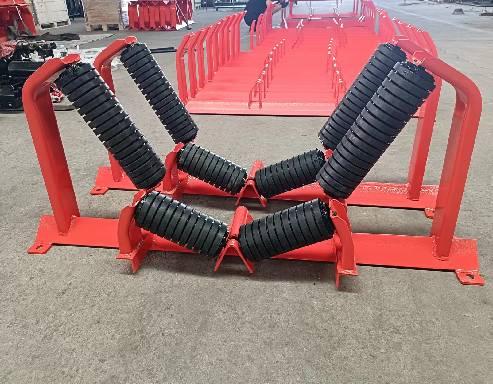 Afrikaans
Afrikaans  Albanian
Albanian  Amharic
Amharic  Arabic
Arabic  Armenian
Armenian  Azerbaijani
Azerbaijani  Basque
Basque  Belarusian
Belarusian  Bengali
Bengali  Bosnian
Bosnian  Bulgarian
Bulgarian  Catalan
Catalan  Cebuano
Cebuano  Corsican
Corsican  Croatian
Croatian  Czech
Czech  Danish
Danish  Dutch
Dutch  English
English  Esperanto
Esperanto  Estonian
Estonian  Finnish
Finnish  French
French  Frisian
Frisian  Galician
Galician  Georgian
Georgian  German
German  Greek
Greek  Gujarati
Gujarati  Haitian Creole
Haitian Creole  hausa
hausa  hawaiian
hawaiian  Hebrew
Hebrew  Hindi
Hindi  Miao
Miao  Hungarian
Hungarian  Icelandic
Icelandic  igbo
igbo  Indonesian
Indonesian  irish
irish  Italian
Italian  Japanese
Japanese  Javanese
Javanese  Kannada
Kannada  kazakh
kazakh  Khmer
Khmer  Rwandese
Rwandese  Korean
Korean  Kurdish
Kurdish  Kyrgyz
Kyrgyz  Lao
Lao  Latin
Latin  Latvian
Latvian  Lithuanian
Lithuanian  Luxembourgish
Luxembourgish  Macedonian
Macedonian  Malgashi
Malgashi  Malay
Malay  Malayalam
Malayalam  Maltese
Maltese  Maori
Maori  Marathi
Marathi  Mongolian
Mongolian  Myanmar
Myanmar  Nepali
Nepali  Norwegian
Norwegian  Norwegian
Norwegian  Occitan
Occitan  Pashto
Pashto  Persian
Persian  Polish
Polish  Portuguese
Portuguese  Punjabi
Punjabi  Romanian
Romanian  Russian
Russian  Samoan
Samoan  Scottish Gaelic
Scottish Gaelic  Serbian
Serbian  Sesotho
Sesotho  Shona
Shona  Sindhi
Sindhi  Sinhala
Sinhala  Slovak
Slovak  Slovenian
Slovenian  Somali
Somali  Spanish
Spanish  Sundanese
Sundanese  Swahili
Swahili  Swedish
Swedish  Tagalog
Tagalog  Tajik
Tajik  Tamil
Tamil  Tatar
Tatar  Telugu
Telugu  Thai
Thai  Turkish
Turkish  Turkmen
Turkmen  Ukrainian
Ukrainian  Urdu
Urdu  Uighur
Uighur  Uzbek
Uzbek  Vietnamese
Vietnamese  Welsh
Welsh  Bantu
Bantu  Yiddish
Yiddish  Yoruba
Yoruba  Zulu
Zulu Affordable Impact Rollers Available for Purchase with High Quality and Durability
Exploring Impact Rollers for Sale A Comprehensive Guide
In the world of construction and heavy machinery, the importance of efficient and effective equipment cannot be understated. Among such critical tools is the impact roller—a powerful device designed to improve various processes, particularly in the road construction and maintenance sectors. If you’re in the market for impact rollers, understanding their functionality, benefits, and the considerations to take when purchasing one can greatly enhance your operational efficiency.
What is an Impact Roller?
An impact roller is a type of machinery used primarily for soil stabilization, asphalt laying, and improving the integrity of roadways. It combines the functionalities of conventional rollers with the added force of impact, allowing it to compact materials more effectively. The primary role of the impact roller is to deliver high-energy impacts to the surface, which breaks down and compacts the materials underneath, leading to a more durable and stable foundation.
Benefits of Using Impact Rollers
1. Efficiency in Compaction Impact rollers are known for their ability to compact materials quickly and thoroughly. Their design allows for a significant level of force to be applied to the surfaces being worked on, reducing the time it takes to achieve desired compaction levels.
2. Versatility These machines can be used in a variety of applications, including asphalt compaction, soil stabilization, and even snow compaction in colder climates. This versatility makes impact rollers a valuable addition to any construction fleet.
3. Cost-Effectiveness By completing tasks more rapidly and efficiently, impact rollers can help to lower labor costs and equipment operation costs. The reduction in time taken to complete projects also means quicker turnarounds and improved profit margins.
4. Improved End Results The high compaction quality achieved by impact rollers leads to smoother surfaces with fewer defects, significantly reducing maintenance needs over the life cycle of a project.
impact roller for sale

What to Consider When Buying an Impact Roller
When looking for an impact roller for sale, several factors should influence your decision
1. Type of Applications Consider the specific tasks you need the impact roller for. Different models may be better suited for varying applications, so ensure that the equipment you choose aligns with your project requirements.
2. Specifications and Features Evaluate the specifications of different models, focusing on factors such as roller weight, drum width, and the energy output of the impact mechanism. Choosing a model with the appropriate specifications for your tasks is crucial.
3. Budget Determine your budget ahead of time. Impact rollers come at various price points, and while it may be tempting to opt for the cheapest option, investing in high-quality machinery can lead to longer-term savings due to durability and reliability.
4. Manufacturer Reputation Research and consider brands known for their reliability and after-sales service. A reputable manufacturer should offer good warranties and support, which can be invaluable when issues arise.
5. Availability of Spare Parts Ensure that spare parts are readily available and consider the cost of maintenance. Machines that require expensive or hard-to-find parts can lead to downtime and increased operational costs.
6. User Reviews and Feedback Look for reviews and testimonials from current users. First-hand experiences can provide valuable insights into the performance and reliability of the impact roller.
Conclusion
Investing in an impact roller can significantly enhance your construction operations. With their versatility, efficiency, and cost-effectiveness, these machines are indispensable for achieving high-quality results in various compaction tasks. By carefully considering your application needs, budget, and the features available in the market, you can make an informed decision that will benefit your projects for years to come. Explore different options available for impact rollers for sale today, and unlock the potential for improved efficiency and quality in your construction processes.
-
Revolutionizing Conveyor Reliability with Advanced Rubber Lagging PulleysNewsJul.22,2025
-
Powering Precision and Durability with Expert Manufacturers of Conveyor ComponentsNewsJul.22,2025
-
Optimizing Conveyor Systems with Advanced Conveyor AccessoriesNewsJul.22,2025
-
Maximize Conveyor Efficiency with Quality Conveyor Idler PulleysNewsJul.22,2025
-
Future-Proof Your Conveyor System with High-Performance Polyurethane RollerNewsJul.22,2025
-
Driving Efficiency Forward with Quality Idlers and RollersNewsJul.22,2025





























